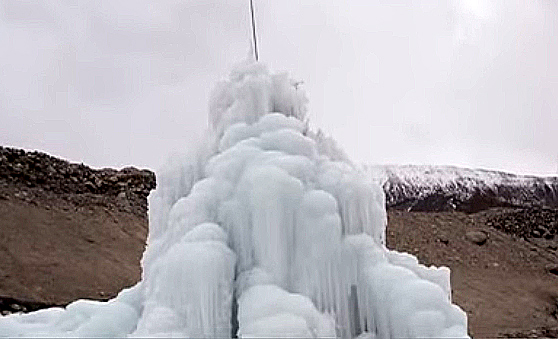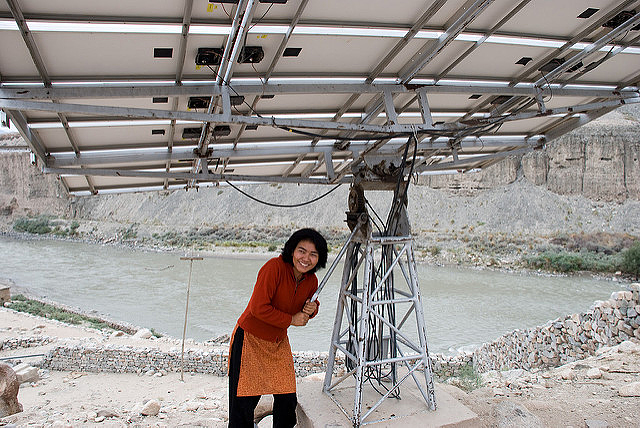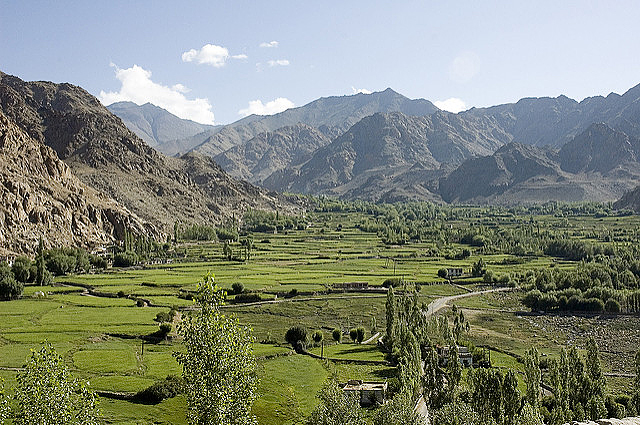Sonam Wangchuk, a visionary Ladakhi engineer, won a prestigious international prize for his ice stupa design in mid-November and announced two weeks later that the money would help fund a new university. His intention is that Ladakhis, at the first university to be built in their section of India, should themselves develop innovative solutions to the problems they face as mountain people. Scores of news services in India covered the story of his prize—and his extraordinary vision for Ladakh.
The Times of India, and most of the others, mentioned Wangchuk’s prize, one of the Rolex Awards for Enterprise, which was announced on November 15. The prize, 100,000 Swiss francs (U.S. $104,000), is awarded according to the Rolex website to “extraordinary individuals who possess the courage and conviction to take on major challenges.” The award seeks to recognize “a new or ongoing project anywhere in the world—one that deserves support for its capacity to improve lives …”
The Rolex Award specifically recognized Wangchuk for his ice stupa project, which he developed with the cooperation of people at SECMOL, a pioneering school that he had founded in the 1990s. He developed his ice stupa concept by theorizing that when water is frozen and stored in cones of ice it will resist melting five times longer than the artificial glaciers developed earlier by another Ladakhi engineer.

In early 2014, with the assistance of some of the SECMOL students, he experimented with the construction of an ice cone. Local villagers were enthusiastic about his project, referring to it as an ice stupa rather than just a cone, and a Rinpoche from a nearby monastery hung prayer flags and blessed it. As the ice slowly melted, the water would be used by neighboring farmers for their spring crops. Wangchuk’s plan was to erect more ice stupas in the Phyang Valley a few miles to the northeast of the SECMOL campus and not far from Leh.
It is clear from the news coverage recently that Wangchuk’s pioneering advances in founding an alternative school were never far from his mind when he received the Rolex Award. One news report, posted on the website Firstpost.com, provided some interesting details about SECMOL, which the inventor had founded in 1994. Evidently as late as the mid-1990s, schools in Ladakh were failing 85 to 90 percent of their students. They saw schooling as alien and irrelevant, so Wangchuk decided to do something about it.

He founded an experimental school a few miles from Leh and overlooking the Indus River called Students’ Educational and Cultural Movement of Ladakh (SECMOL). Wangchuk used local materials and solar designs to foster a spirit of innovation—and to keep the buildings cool in summer and warm in winter. The new school promoted gender equality, an easy sell for traditional Ladakhi people, and Wangchuk stressed that the institution should be run by the students themselves. Leadership responsibilities change every other month.
But then the success of SECMOL prompted Wangchuk to found Village Education Committees to spread farther the revolutionary idea that education should be designed to meet the needs of students. However, those ideas seemed threatening to some of the vested educational establishments in Ladakh and Wangchuk decided to keep himself safe by fleeing from the state for a while. But now that his innovations have brought him global recognition, he doesn’t seem to worry. And, as Firstpost.com commented, Wangchuk does not appear to be resentful. The reporter wrote, “Perhaps the greatest education his movement can give is the art of forgiveness, of positivity and resilience.”

Of course the major news is that Wangchuk decided to use last month’s prize money to found what he is calling the Himalayan Institute of Alternatives in Ladakh (HIAL). At a session of the Future Talk Series in New Delhi he announced his plan for an “alternative university for mountain development,” modeled after his alternative school, with his prize money getting it started. It will be located in the Phyang Valley, where his experimental ice stupas are being developed.
He said that the local government, the Ladakh Autonomous Hill Development Council, Leh, has allocated 200 acres of land in the valley for the proposed campus. He plans to use his 25 years of SECMOL experience in developing practical education programs and scale up to the issues of opening the first institution of higher education in Ladakh. He also announced a global crowdfunding campaign to seek additional supporters for his practical university. Furthermore, he hopes that his nearby ice stupas may generate some tourist revenues that will provide additional funds for the experimental university.
According to the crowdfunding website milaap.org, Wangchuk is hoping to raise 70,000,000 Indian rupees, seven times the amount he has already committed to the projected university from his prize. He wrote on the website, “HIAL will engage youths from multiple Himalayan countries in Research & Development to tackle the issues faced by mountain people, especially in the domains of education, culture, and the environment. Like SECMOL, the university aims to break the rigid boxes of conventional thinking, be relevant to people’s lives, and encourage learning via practical application of knowledge.” It’s no wonder the people of India, and Ladakhis in particular, are excited about his ideas.